Find more information in the General Comments section of the assessment
Find more information in the Rating Validity tab of the assessment
- See More
- See More
- See More
- See More
- Good
- Adequate
- Marginal
- Weak
- Poor
 Passenger
Passenger
 Driver
Driver
 Rear Seat
Rear Seat
 Front Seat
Front Seat
 Car
Car
 Pole
Pole
- Good
- Adequate
- Marginal
- Weak
- Poor


Passenger
outboard
center
Fitted to the vehicle as standard
Not fitted to the test vehicle but available as option
Not Available
-
Infants up to 13 kg
-
Infants and toddlers up to 18 kg
-
Toddlers from 9 to 18 kg
-
Toddlers over 18 kg
Easy
Difficult
Safety critical
Not allowed
| Seat Position | ||||
|---|---|---|---|---|
| Front | 2nd row | |||
| Passenger | Left | center | Right | |
| Maxi Cosi Cabriofix (Belt) | ||||
| Britax Römer King Plus (Belt) | ||||
| Britax Römer Duo Plus (ISOFIX) | ||||
| Britax Römer KidFix (Belt) | ||||
| Maxi Cosi Cabriofix & EasyFix (Belt) | ||||
| Maxi Cosi Cabriofix & EasyFix (ISOFIX) | ||||
| BeSafe iZi Kid X3 ISOfix (ISOFIX) | ||||
| Maxi Cosi Pearl & Familyfix (ISOFIX) | ||||
| Britax Römer KidFix (ISOFIX) | ||||
Easy
Difficult
Safety critical
Not allowed
Based on dummy readings in the dynamic tests, the MG3 scored maximum points for its protection of the 1½ year infant. In the frontal test, forward movement of the head of the 3 year dummy, sat in a forward-facing restraint, was not excessive. However, chest and neck loads indicated only fair protection. A switch is available on some grades of the MG3 which allows the passenger airbag to be disabled. On vehicles which are not equipped with the switch, a rearward-facing child restraint should NOT be used in the front passenger seat. Early versions of the user manual are incorrect and indicate that the front passenger seat is suitable for a universal child restraint. As the switch is not standard equipment, the system could not be awarded points but an assessment indicated that information provided to the driver regarding the status of the airbag is not sufficiently clear. All of the child restraints for which the car is designed could be properly installed in the vehicle, except for the universal group 1 in the rear outboard seats. In these positions, the child restraint is not supported by the seat back, allowing rotation of the restraint.
- Good
- Adequate
- Marginal
- Weak
- Poor

Head Impact 16.4 Pts
Pelvis Impact 0.0 Pts
Leg Impact 5.1 Pts
The protection provided by the bumper to pedestrians' legs was good or marginal. However, the front edge of the bonnet offered poor protection in all areas tested and scored no points. The bonnet was generally adequate over its surface with poor protection provided along the stiff wing edges and windscreen pillars.
- Good
- Adequate
- Marginal
- Weak
- Poor
| System Name | SCS | |
| Performance | ||
| Applies To | Front seats | ||
| Warning | Driver Seat | Front Passenger(s) | Rear Passenger(s) |
| Visual | |||
| Audible | |||
|
|||
Electronic stability control is standard equipment on the MG3, as is a seatbelt reminder system for the front seats. The car is not offered with lane support, speed assistance or autonomous braking.
- Specifications
- Safety Equipment
- Videos
- Rating Validity
Specifications
Tested Model MG3 1.5VTi-TECH 3Form Sport, RHD
Body Type - 5 door hatchback
Year Of Publication 2014
Kerb Weight 1150kg
VIN From Which Rating Applies - SDPZ1CBDAED029436
Class City and Supermini
Safety Equipment
Note: Other equipment may be available on the vehicle but was not considered in the test year.
Fitted to the vehicle as standard
Fitted to the vehicle as option
Not fitted to the test vehicle but available as option
Not Available
Not Applicable
Videos
Rating Validity








Find more information in the General Comments section of the assessment
 Share
Share
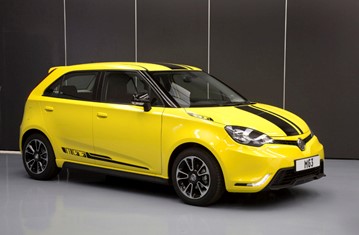
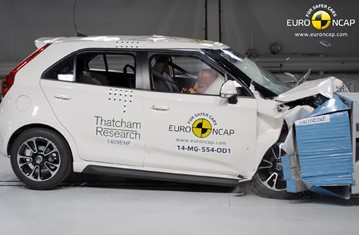
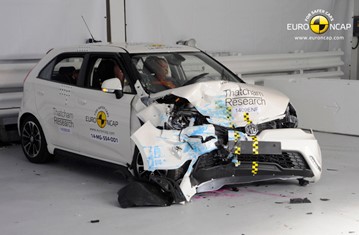
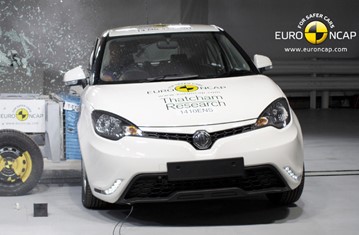
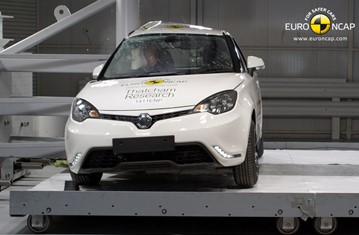
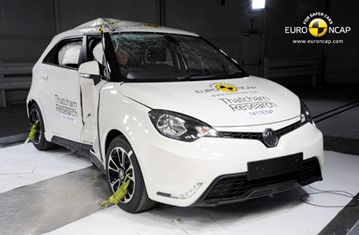



The passenger compartment remained stable in the frontal impact. The airbags of both the driver and the passenger were not sufficiently inflated to prevent the head 'bottoming out', through the fabric of the airbag, against the steering wheel and dashboard, respectively. Although dummy readings were not compromised, the score was penalised and protection of the head was rated as adequate. Similarly, dummy readings indicated good protection of the knees and femurs of the driver and passenger. However, structures in the dashboard were considered a risk to occupants of different sizes or to those sat in different positions and protection of the knee/femur/pelvis area was rated as marginal. In the side barrier test, the MG3 scored maximum points with good protection of all body regions. In the more severe side pole test, dummy readings of chest compression indicated marginal protection of this body area. Protection against whiplash injuries in the event of a rear-end collision was rated as marginal for the front seats and poor for the rear.